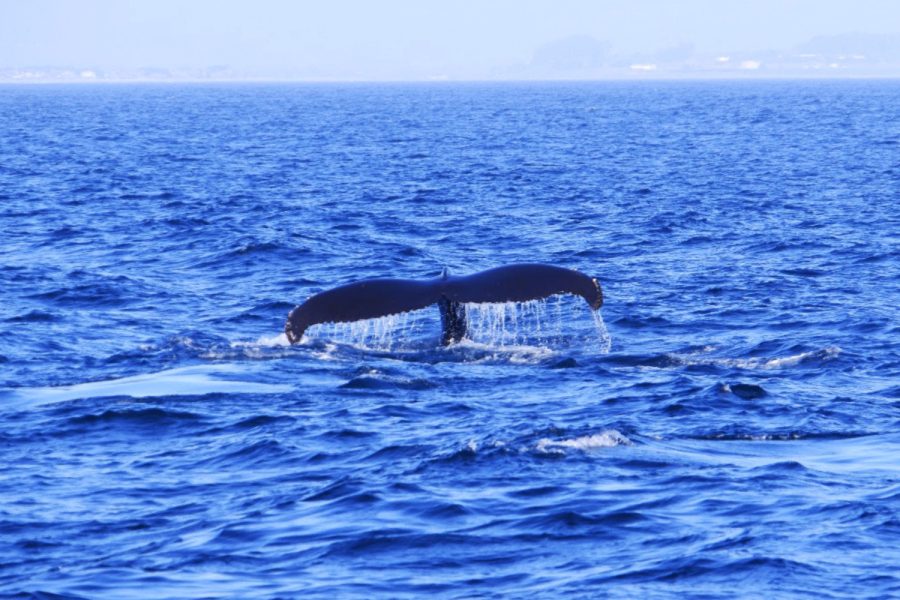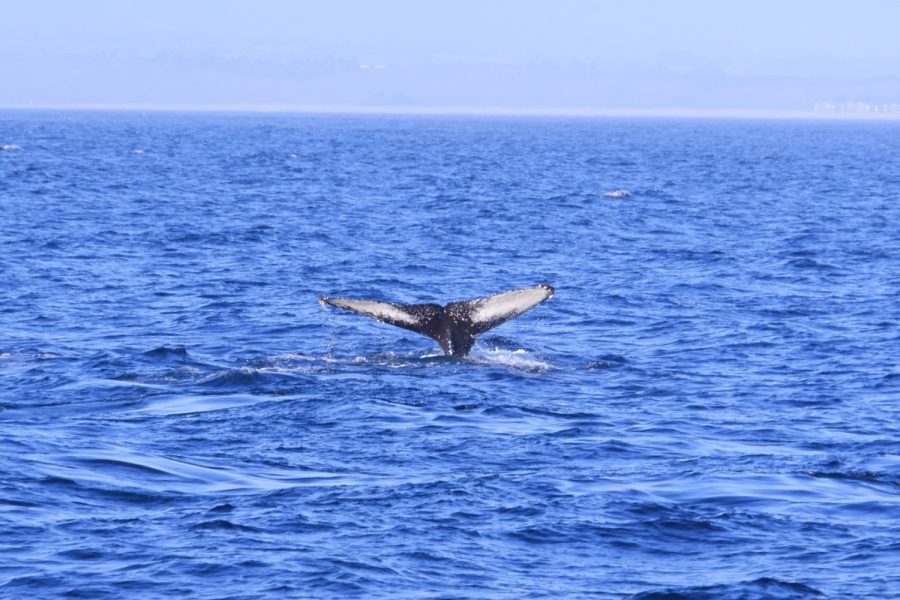The official whale watching season is coming to an end with the last days of November, but anyone wishing to catch a glimpse of a tail or witness the spray of a blowhole should not lose hope.
Specialists report that the 20,000 whales along the West Coast, who often pass through Monterey Bay, can be spotted throughout the year.
“The fall is a very good time of year to see whales, and it’s rare not to see one during a trip. We have two main seasons that overlap, so it’s possible to see whales anytime during the year,” said Kate Cummings, who has been the captain of whale-watching tours out of Moss Landing for 14 years.
For these two main whale watching seasons, the feeding and migrating seasons, Monterey Bay’s nutrient-rich waters are ideal. With temperatures between 50 and 60 degrees Fahrenheit, this bay houses plenty of krill, anchovies, and sardines, optimal for whales.
“Sometimes, we can see up to 100 whales a day. There is a very concentrated whale population here. That’s why Monterey is so great,” said Eric Austin Yee, a marine biologist who works on whale-watching boats in Monterey Bay.
But the mating season, another critical phase in whale survival, guides whales out of the cold temperatures of northern California, as whale calves cannot survive here.
However, whales in different life stages sometimes refrain from migrating.
“People are always confused when we see whales out of season. But some whales, especially young ones that aren’t mating yet, don’t need to leave Monterey. Their hormones don’t make them leave the cold waters until later on. This means whales can be seen year-round here,” Austin Yee said.
Whale migration is essential for accommodating the best conditions for whales when they need them. At the same time, it allows locations like Monterey Bay to witness numerous whale species as they pass through.
Humpback, gray, killer, and blue whales are often spotted in Monterey Bay. All identifiable through their distinct features, these whales can be differentiated by whale-watching boat staff and pointed out to visitors.
However, humpback whales have a unique feature: flukes. Flukes are the two lobes of a whale’s tail, but humpbacks’ underside has a unique pigmentation so distinctive that researchers use them to identify individuals.
“As the boat captain, I try to take photos of all of the whale flukes we spot, which is super important. All researchers love collecting fluke IDs because we can learn more about whale population densities, migration routes, and age,” Cummings said.
According to Cummings, whale watching is an important tourist attraction but can also contribute to research, including fluke identification. Sharing information about whales can also raise awareness about whale endangerment.
Whale watching itself has strict restrictions to ensure it does not contribute to whale vulnerability. Remaining at a safe distance, limiting time observing, and prohibiting chasing are all basic guidelines followed by whale-watching boats, according to Austin Yee.
“We bring people out here to see creatures not easily seen, but we are still trying to witness normal whale behavior. Our goal is not to modify their habits,” Austin Yee said. “People come to see whales behaving normally, not freaked out.
Without endangering whales further, whale watching can have numerous positive effects, especially for people seeing whales for the first time.
“I was so surprised that we saw so many whales in November. It was so eye-opening to see such huge creatures so up close,” said Charlotte Brin, a first-time whale watcher.
As the world’s largest mammals, whales are remarkable creatures that have the ability to inspire.
“There’s a saying that people will only protect what they love, and how can they love something they’ve never seen?” Cummings said. “I think it’s so cool that we can take people out to show them these incredible animals, and they fall in love.”

































